Tracing Nomadic Images
Digital mediation of the world produces ongoing constant consumption of fetishized images, of human and non-human bodies in motion deprived of a past and a future. For the spectator, it is almost impossible to recognize and perceive the network of events that has led to the current situation, to be able to trace how we got here.
These images conceal invisible histories. Stripped of the specific geographic and historical relations that produced them, they are effectively nomads with no provenance and nowhere to go. Accumulation and multiplication of images is an accumulation of the hidden histories behind them. How do we recover these invisible histories? How is our lack of access to this stolen temporal dimension akin to a suppressed collective memory and why do we need to recover from this strange form of amnesia? And how does this historicization help us decolonize images, archives and our minds?
This common image destiny becomes particularly meaningful when images are politically charged; when they can change lives and activate political decisions.
The intersection of notions of race, national identity and capitalist modes of production in constant search of new raw materials, labor and territory results in mass migration, ecological disasters and constant wars in the global south. The phenomenon of migration from the global south to the global north, which is the focus of my research, is the outcome of various historical forces including the movement of postcolonial subjects from the economically, ecologically and politically devastated peripheries to the cities, the global north’s need for labor and the migration of the inhabitants of proxy war zones, fueled and enabled by the arms industries and global capitalism.
A common understanding of such conditions is often the outcome of encountering dehistoricized and mediated images of the world. Images that simultaneously show and conceal time, images that flatten complex histories to a single moment and leave aside the trajectories that led to and from this moment.
Are there counter-images that bring the invisible to light? Under what circumstances can counter-images be produced, circulated and preserved?
Making the question of “counter-imagery” a point of departure, I have visited several film archives in search of situated counter-images made by those who bear witness to history and withstand its consequences. I treat these images almost as witnesses in that they can relate experiences of the past to the present and future, disrupting and transgressing the logic of the fetishized image.
I like to think of these films as portals; as gateways to different times and different ways of thinking that are simultaneously atemporal and have their own temporalities; filmic temporalities within the texture of the images, the time of production, the time of exhumation from the archive and being seen here and now. Perhaps more than other media, films can disrupt the linear temporality of a history that claims omniscience and completeness. They can rebuild a new collective memory in which different pasts coexist and different futures are imaginable.
Whether or not migrant films are directly and intentionally political, they always carry the seeds of change, an in-betweenness that challenges the current state of things and questions categories of belonging, ownership, culture and identity. Although most of these audiovisual witnesses depict and express alienation and trauma, some go further to offer alternatives; modes of resistance through creating new ways of becoming, participating, connecting and identifying.
This cinema is “situated and global” in that it seeks to address struggles on a larger scale than the immediate locale in which they take place. This cinema can connect immediate local conditions to international, pan-generational experience; the global alienation of working classes and the history of postcolonial geographies. This cinema reveals hitherto concealed histories and positions them within a global context.
The status of such films is as ambivalent as the status of their makers; both break with the logic of national borders. These films are not of a national cinema proper. These films do not belong entirely to one culture and transgress the binaries of here or there. In this sense, this cinema resides in borderlands, as do many of the filmmakers and their audiences. The diegetic and the extradiegetic mirror one another and overlap.
Although migration in search of a better life is not new in the history of humankind, the technologies, politics and discourses that regulate such movements have changed drastically in modern times. The role of the state apparatus in planning, regulating, hindering and facilitating such movements is only a modern phenomenon.
“Germany opened its door to immigrants in 1952. The treaty that would lead the first workers north was signed between the Kingdom of Greece and the Federal Republic of Germany. The myth of a mountainous land that couldn’t feed its population and of a Ulysses in every Greek became reality. The industrial countries of Central Europe needed cheap labour.”
The film Greek Community in Heidelberg by Lefteris Xanthopoulos opens with these words. The film amplifies voices of workers who believe the Greek ruling class could have provided them jobs but preferred to send them abroad for their own economic interests. Later a worker who lost his eyesight in a work accident after 14 years working in Germany talks about being dismissed after the accident and the harsh working conditions and poor housing for guest workers.
The film can be interpreted as a visual testimony of the post Second World War period when Germany was in dire need of workers to rebuild itself. It documents the conditions experienced by the workers and their families in Germany. The short-term contracts, low wages, the unrewarding nature of the jobs, housing and education of their children, alienation and the feeling of abandonment by both states are themes that Xanthopoulos focuses on in his film.
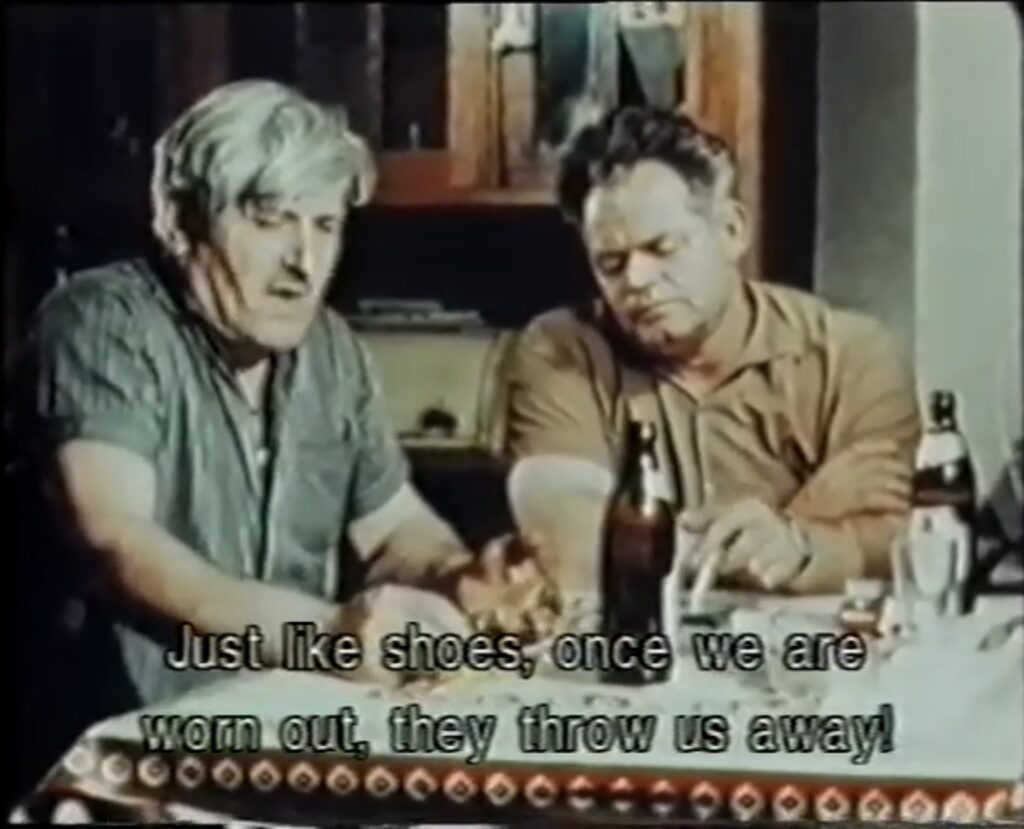
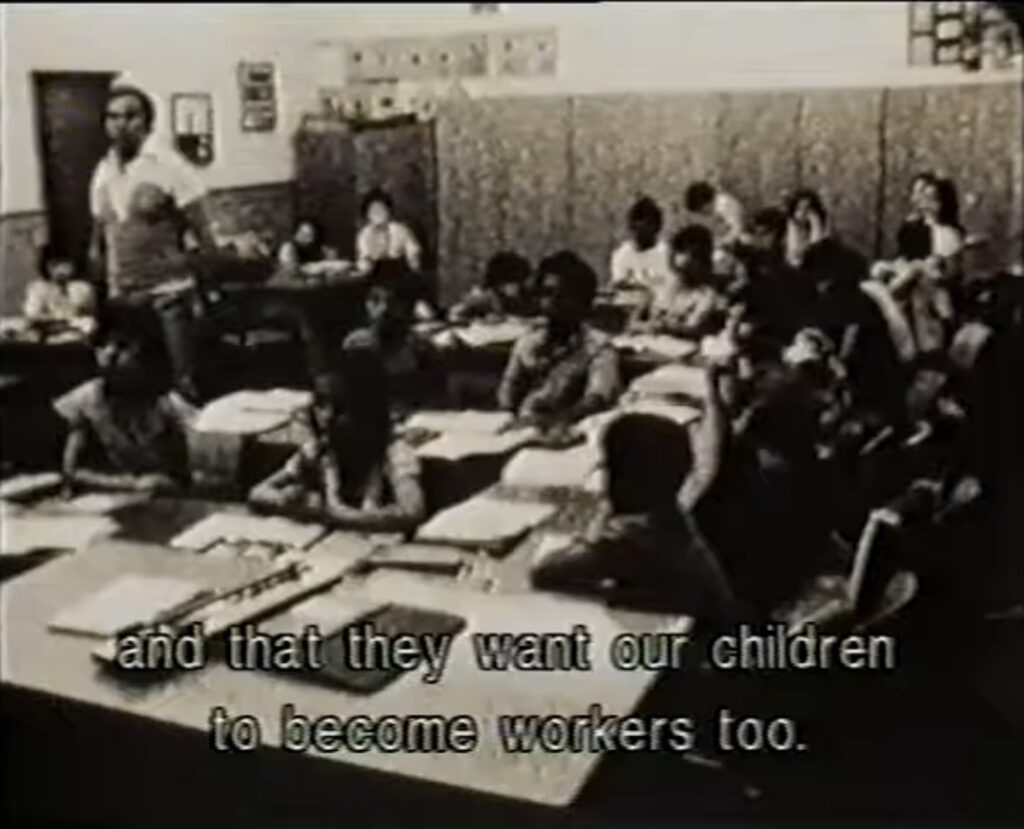
The documentary film Lottando la vita – Lavoratori italiani a Berlino (Struggling for Life – Italian Workers in Berlin,) (1975) produced by Videobase focuses on the same themes of alienation, migration and labor. Seasonal workers from southern Italy in precarious circumstances witness the difficulties of finding jobs in Italy and subsequently the struggles of Italian migrant workers in Germany. Like the Greek workers, the Italian guest workers depicted in the film are cut off from full participation in society. They live in a state of in-betweenness, of constant tension with both their original and current homes. They do not identify with their “host” country although the overall emphasis of both films is more on the material conditions of migrant workers than on their identity crisis. That said, the question of identity as well as the linguistic and educational difficulties of the children of guest workers are properly addressed. Both the Greek and Italian worker communities creatively resolve these challenges, coming up with alternative and collective methods of education for their children as well as community decision-making, leisure and cultural programs. These actions reinforce the community’s sense of solidarity.
Ali in Wonderland by Djouhra Abouda accurately depicts the transformation of the colonized subject to the racialized worker. Algerians, once colonized and violated in the “periphery,” who became soldiers for France in the Second World War and paid with their lives for the colonial power that subjugated them, now turn to metropole but are confronted with yet another form of enslavement and subjugation.
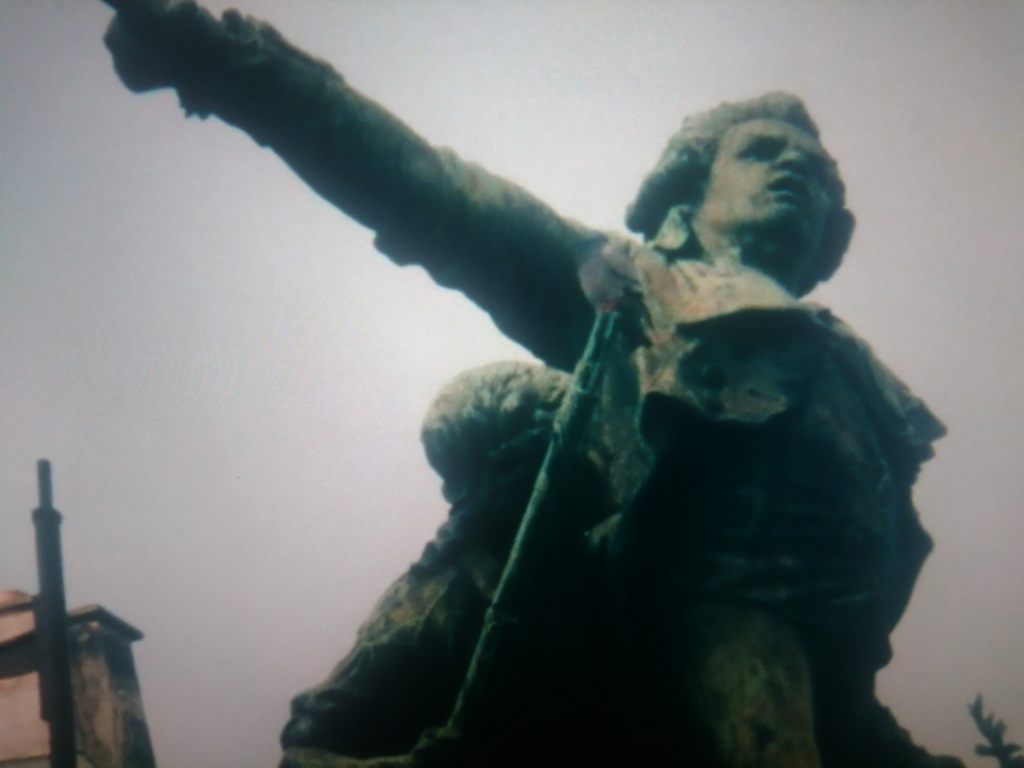
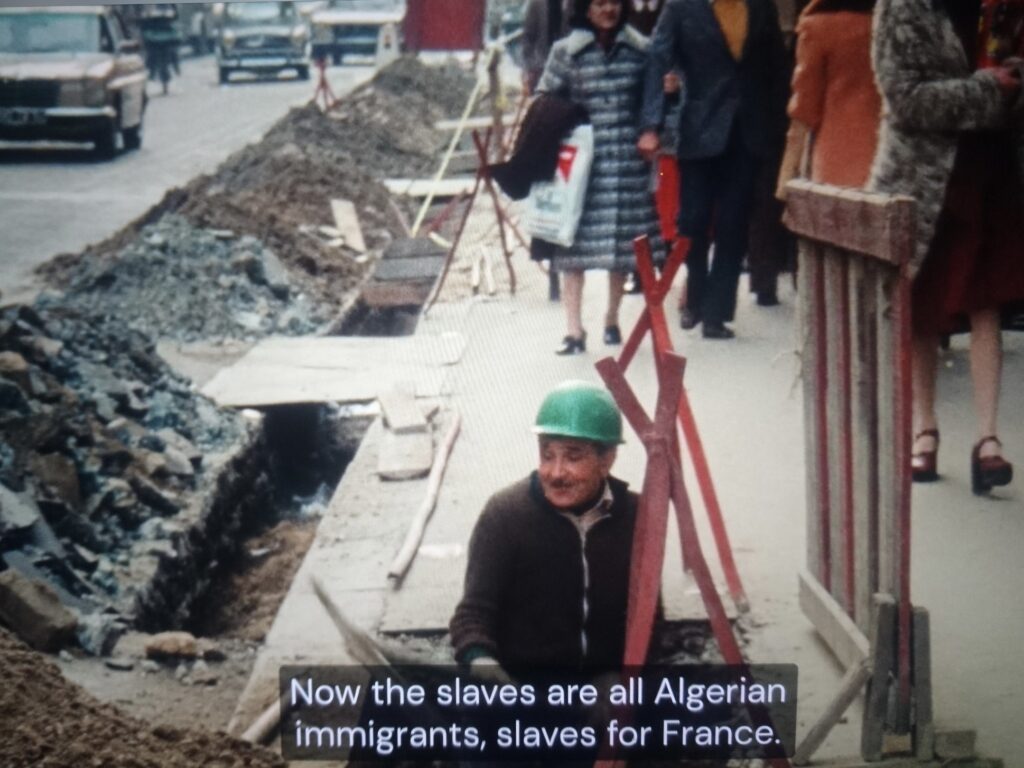
Here subjugation occurs through the creation of a racialized working class, through assigning the lowest social positions and harshest jobs to Arabs and Blacks and preventing their children from having equal educational chances. What follows is poverty, a lack of humane housing as well as everyday racism. The film puts an outstanding emphasis on the problems of labor. More than half of the images in the film depict Arab and Black workers doing all sorts of physically demanding and unrewarding jobs for significantly lower wages than white French citizens.
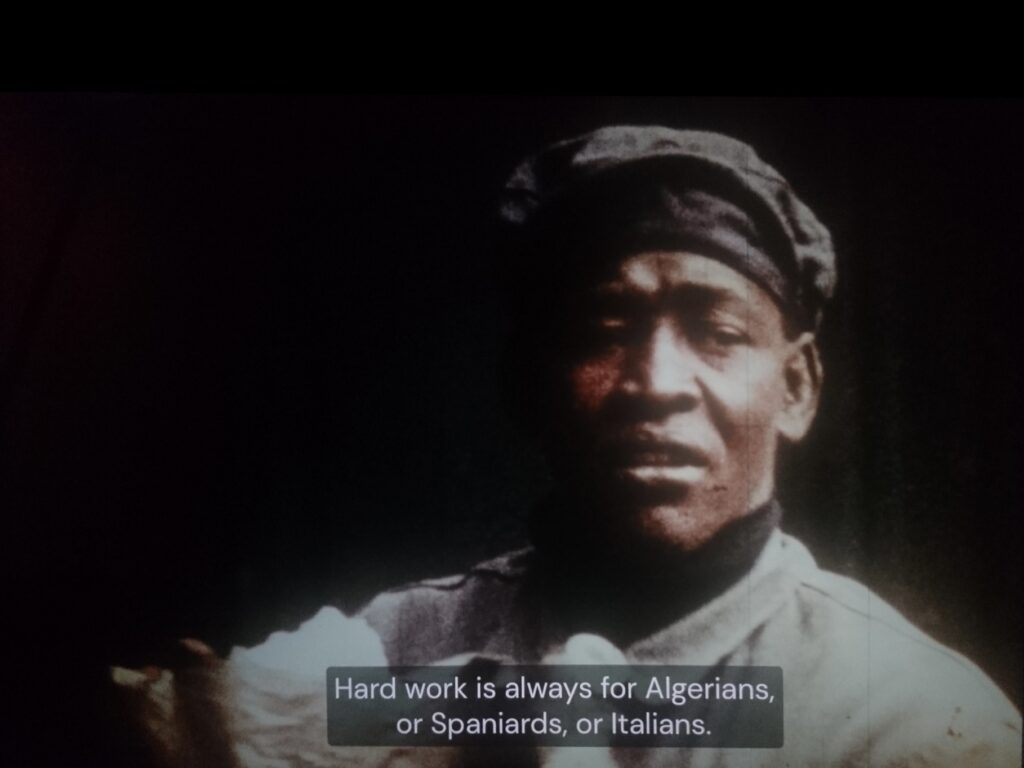
The film also reveals the role played by the media and state propaganda in constructing a legitimizing discourse for exploitation through othering and assigning racial and national categories.
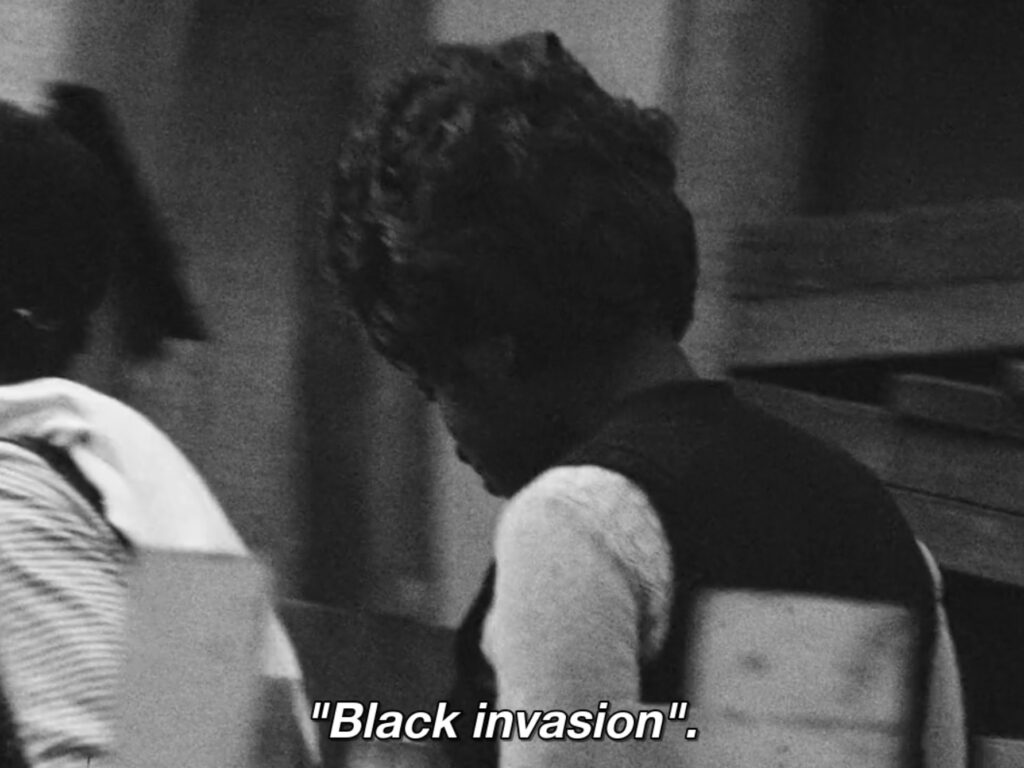
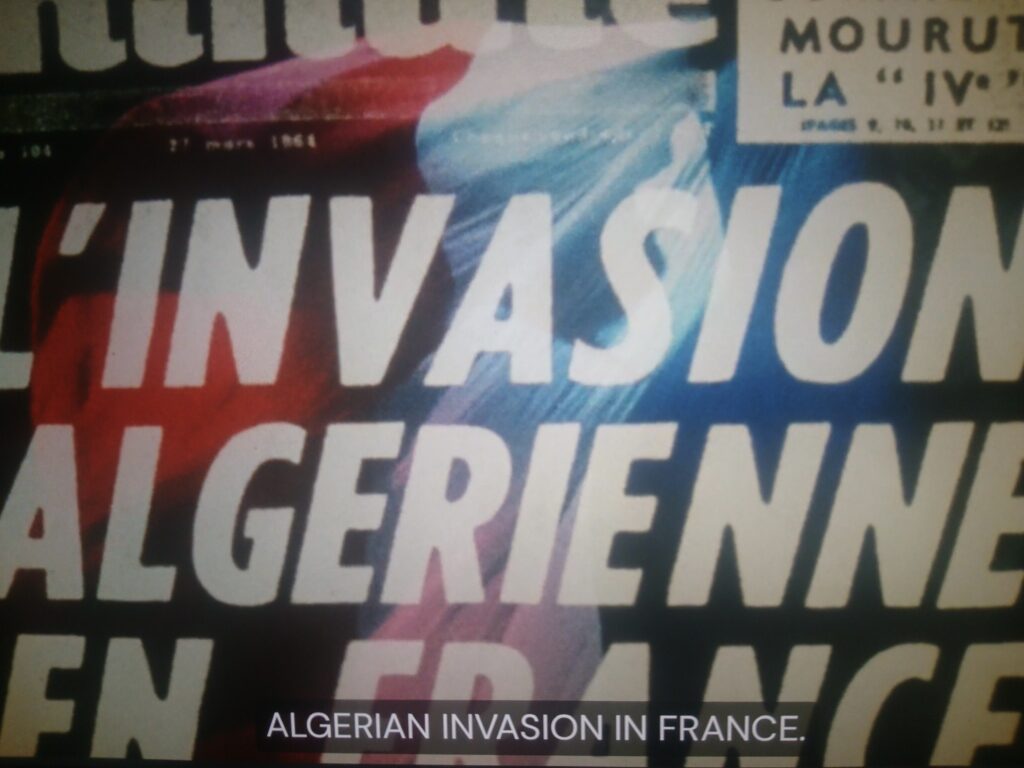
This same history of postcolonial violence is the theme of Soleil O (1967) by Meds Hondo. The film starts with a symbolic representation of the history of colonization of the African continent, the forced conversion of the African population to Christianity and provocations, interventions and wars the European powers incited within the African population. The protagonist, a young Black man carrying various flags of newly independent African nations, heads to Paris in search of a better future and new job opportunities. Soon he realizes that the promises of equality are not kept in the city. He faces racial discrimination on all possible levels: rejection by employers, sexual objectification and being stared at on the street as well as forced assimilation and humiliation. Working for a trade union leads to further disappointment as he soon understands that the French people’s class solidarity precludes the participation of non-white French citizens.
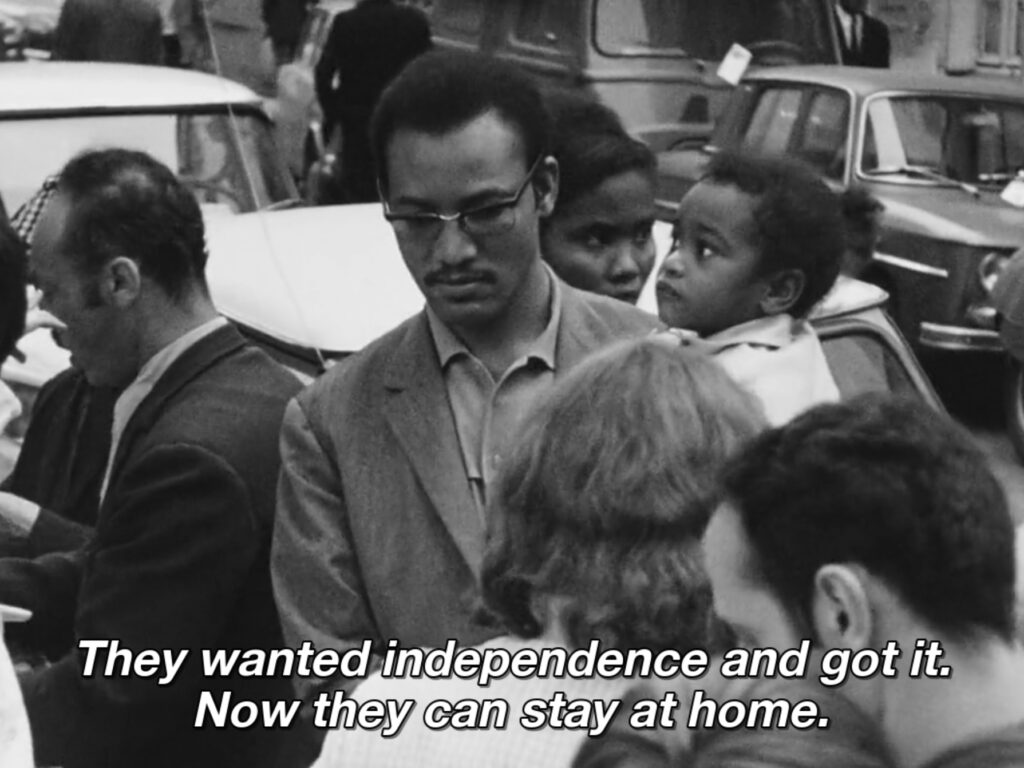
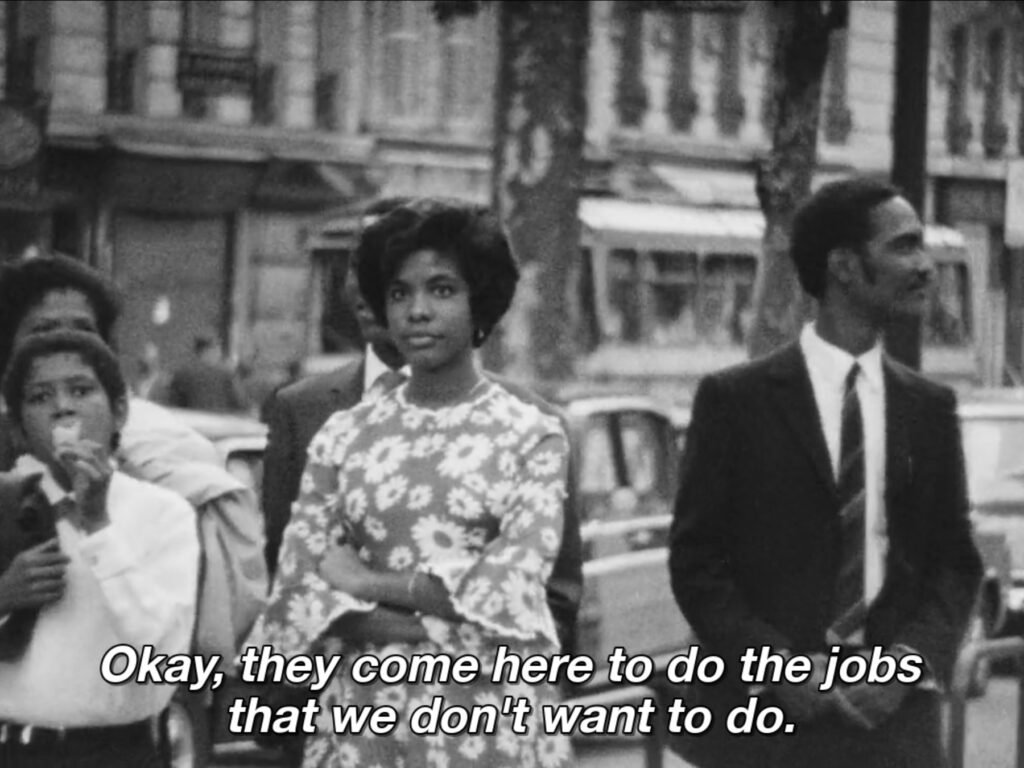
The film puts these situations in historical perspective and depicts the colonial violence that is ongoing but shape shifting. The film ends with the protagonist recovering from an emotional and psychological breakdown and the emergence of a new political consciousness.
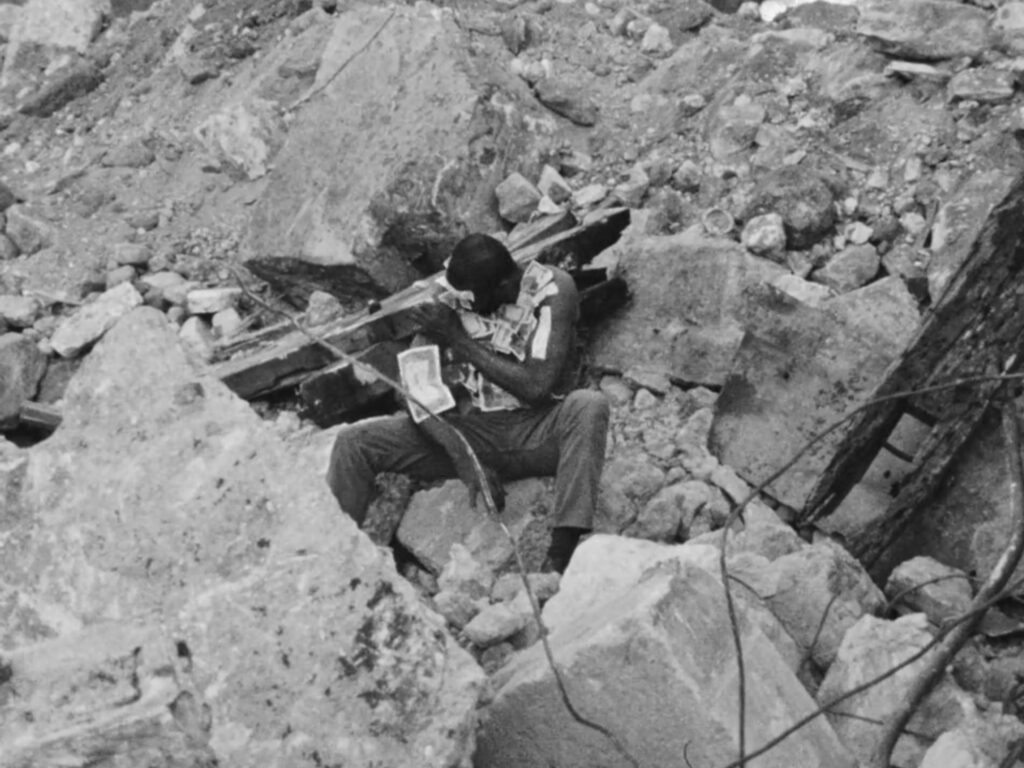
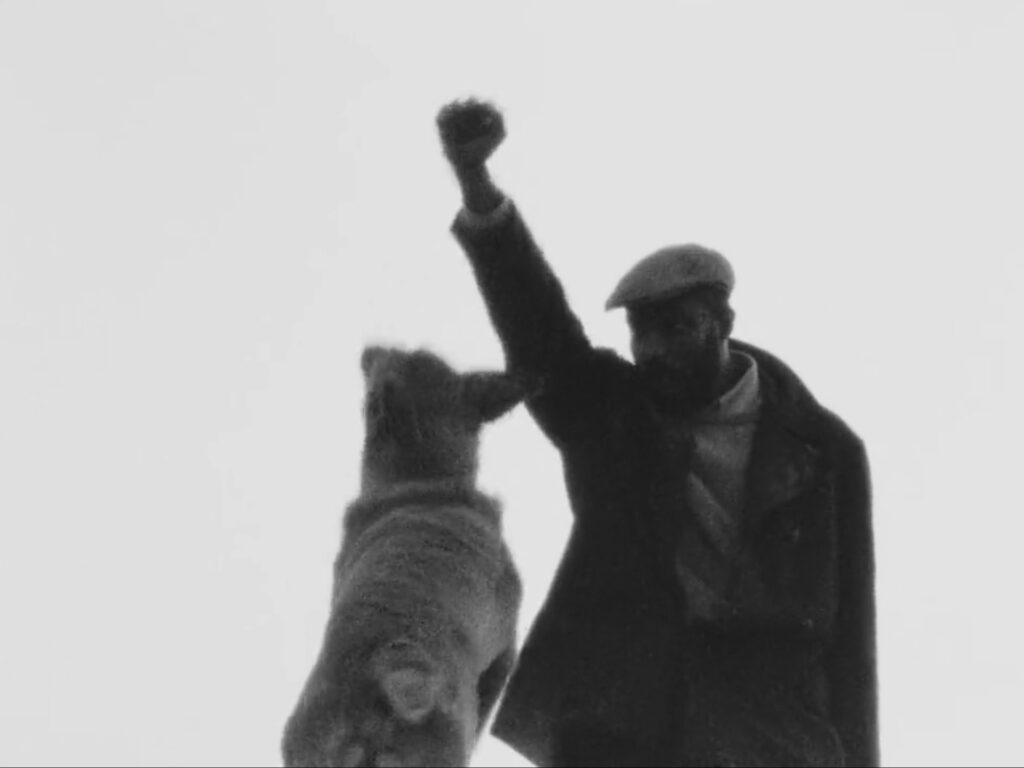
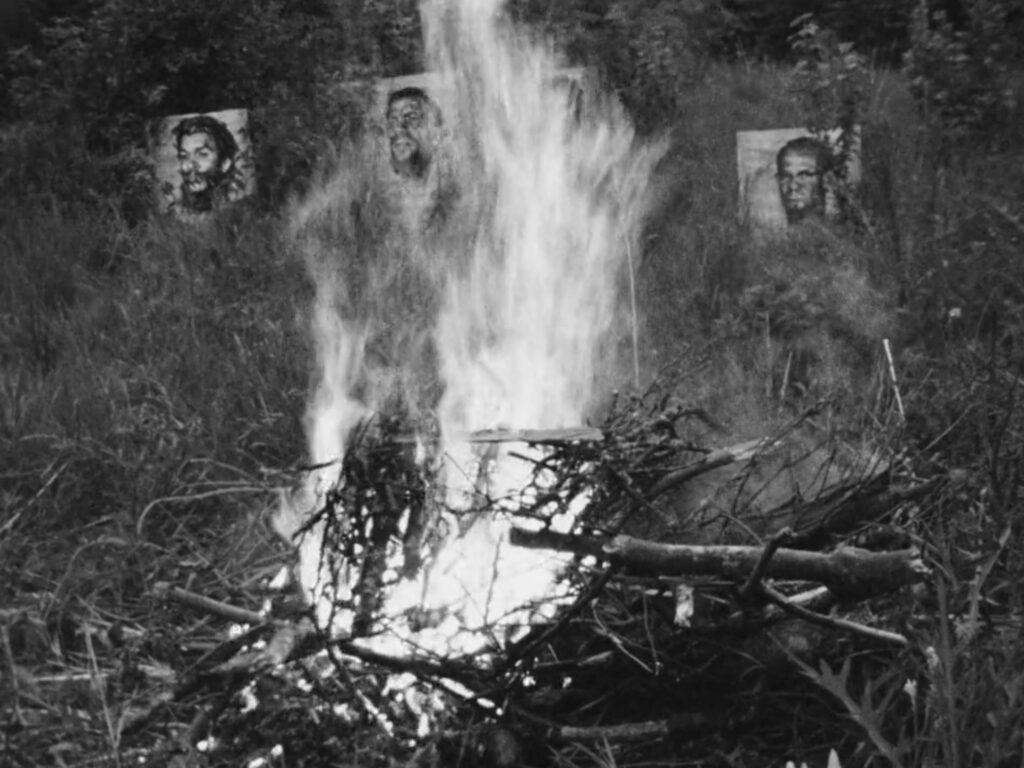
Different but equally fascinating works by Skip Norman, particularly those made at the DFFB in Berlin, are also fully fledged nomadic images. His films, somehow disconnected from German everyday life, extend and transport African-American struggles from North America to Europe. These films connect struggles, knowledge and ideas across geographies and draw a global perspective for the colonized populations – from the Black Panthers to Franz Fanon and from Oakland to West Berlin.
In Cultural Nationalism, we hear the voice of Bobby Seale, co-founder of the Black Panther Party, as the backdrop of an empty and bleak snow-filled field in West Berlin. Bobby Seale discusses the damage caused by co-opting a true revolutionary culture by power structure through cultural nationalism, making it devoid of any emancipatory potential.
“Franz Fanon, said the intellectuals, certain particular customs for the oppressed colonized people. He says, but the intellectual misses the whole damn point, that the power structure is not going to shy away just because you are spreading around a few well-known facts about your culture, that doesn’t make them shy down. He says cultural nationalism misunderstands that custom, it tries to customize these little things, custom deteriorates culture ‘cause culture is a moving thing, a changing thing, a learning thing, he says in fact these intellectuals who propagate this culture will hold back people’s revolutionary struggle.”
As Bobby Seale’s speech on revolution intensifies, the tension grows. The camera does not move. The intensity of the speech is paralleled by the viewers’ growing expectations of a development, an event on the screen, something that will scratch at the stasis of the white field and bring a change. Slowly, a young Black boy appears on the screen from afar and approaches the camera until we see a closeup of his smiling face.
Strange Fruit (1969) starts with a Fanon quote: “Decolonization is the veritable creation of new man.” Soon after we hear Bobby Seale saying, “We hate oppression, we hate killing people, murdering them… we hate the whole system and its oppressive ways, the imperialism itself, that’s what we hate,” the camera pans across the street and passes the building of the Berlin Brigade, a U.S. Army garrison based in West Berlin during the Cold War. As the film continues, Bobby Seale diagnoses the intersection of capitalism, racism and the military apparatus of oppression. He asks the coalition of the oppressed – regardless of their ethnicity – to demand decent housing, education and the right to equal power as we watch images that interweave in a network of connections mapping the oppression.
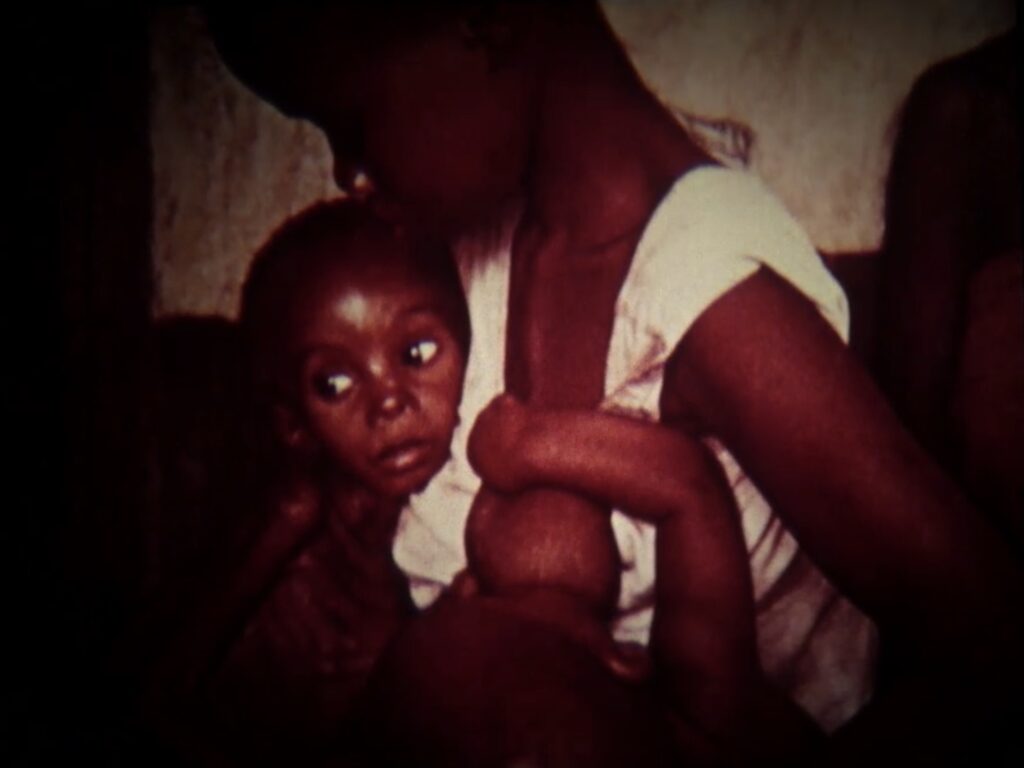
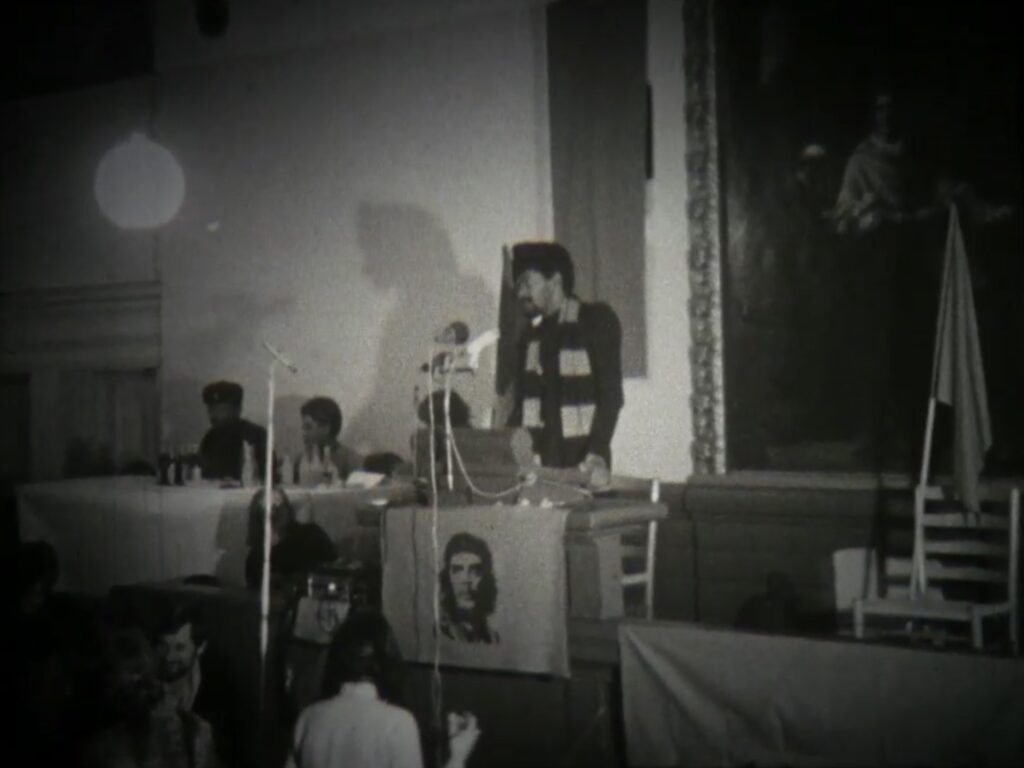
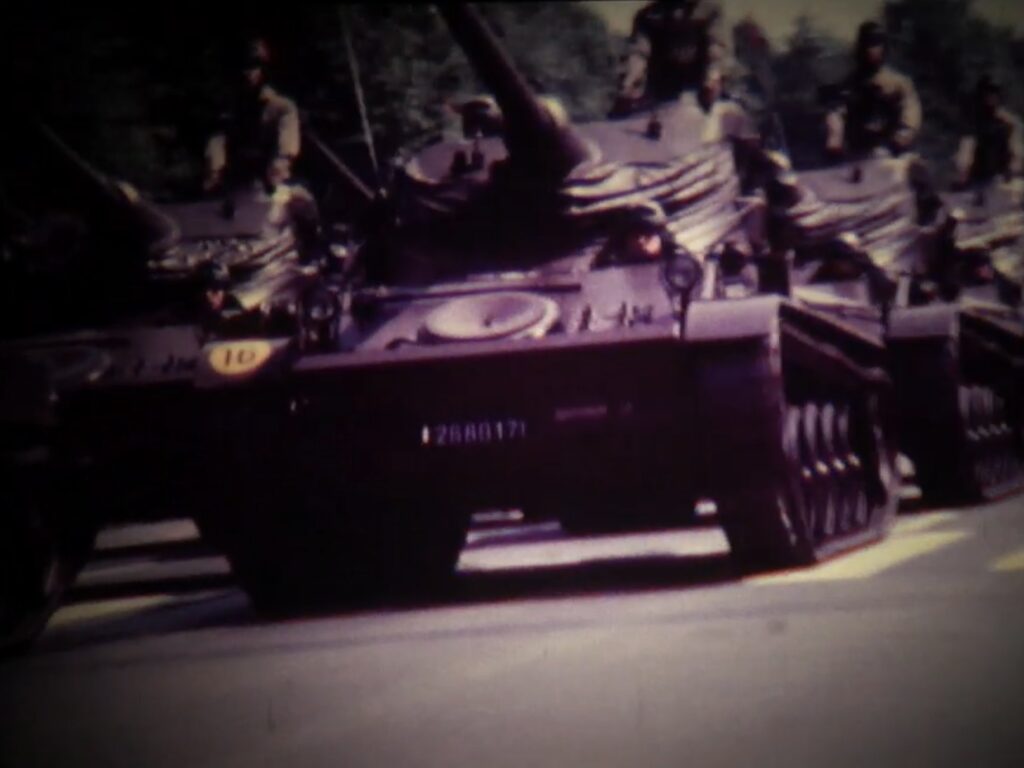
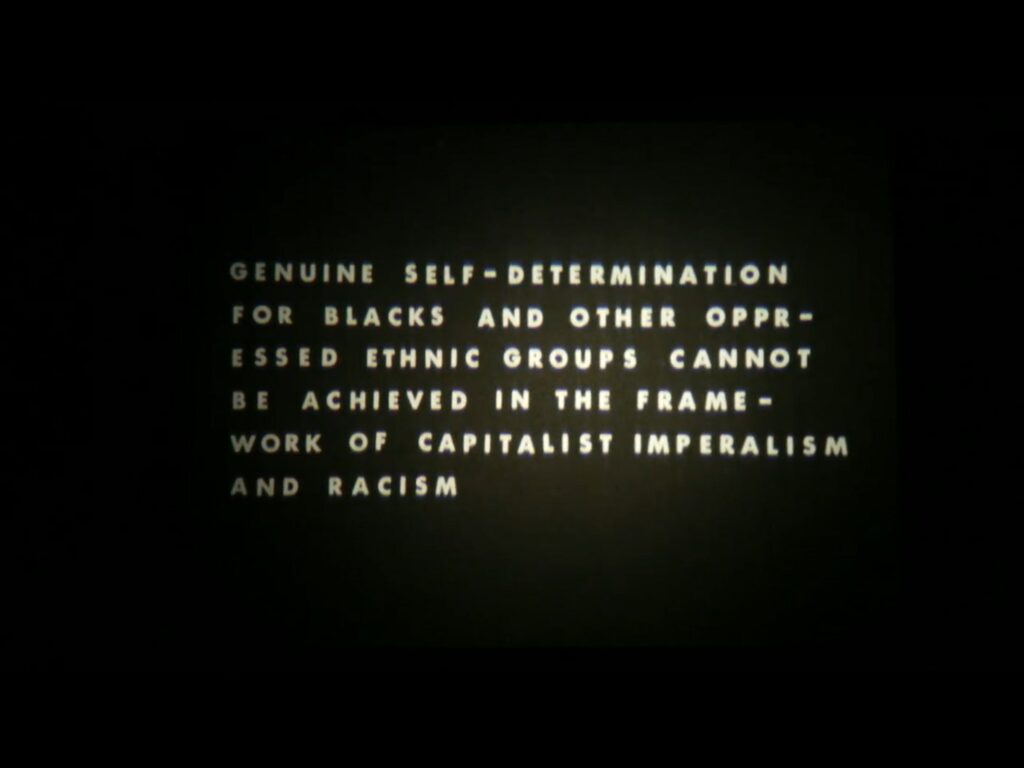
Yabanci (1981) by Muammer Özer shows the journey of a traumatized subject from the point of despair to emancipation. The film starts with a deserted white landscape and the protagonist, a guest worker from an Anatolian village who came to Helsinki to work, trying to take his own life. The Anatolian music over the images of Helsinki marks an acute difference in aesthetics and expresses the cultural shock he experiences. We learn about the political unrest and the suppression of the working-class organizations and unions in Turkey and the violence against political activists. As the film proceeds, we witness the protagonist going through different stages of alienation.
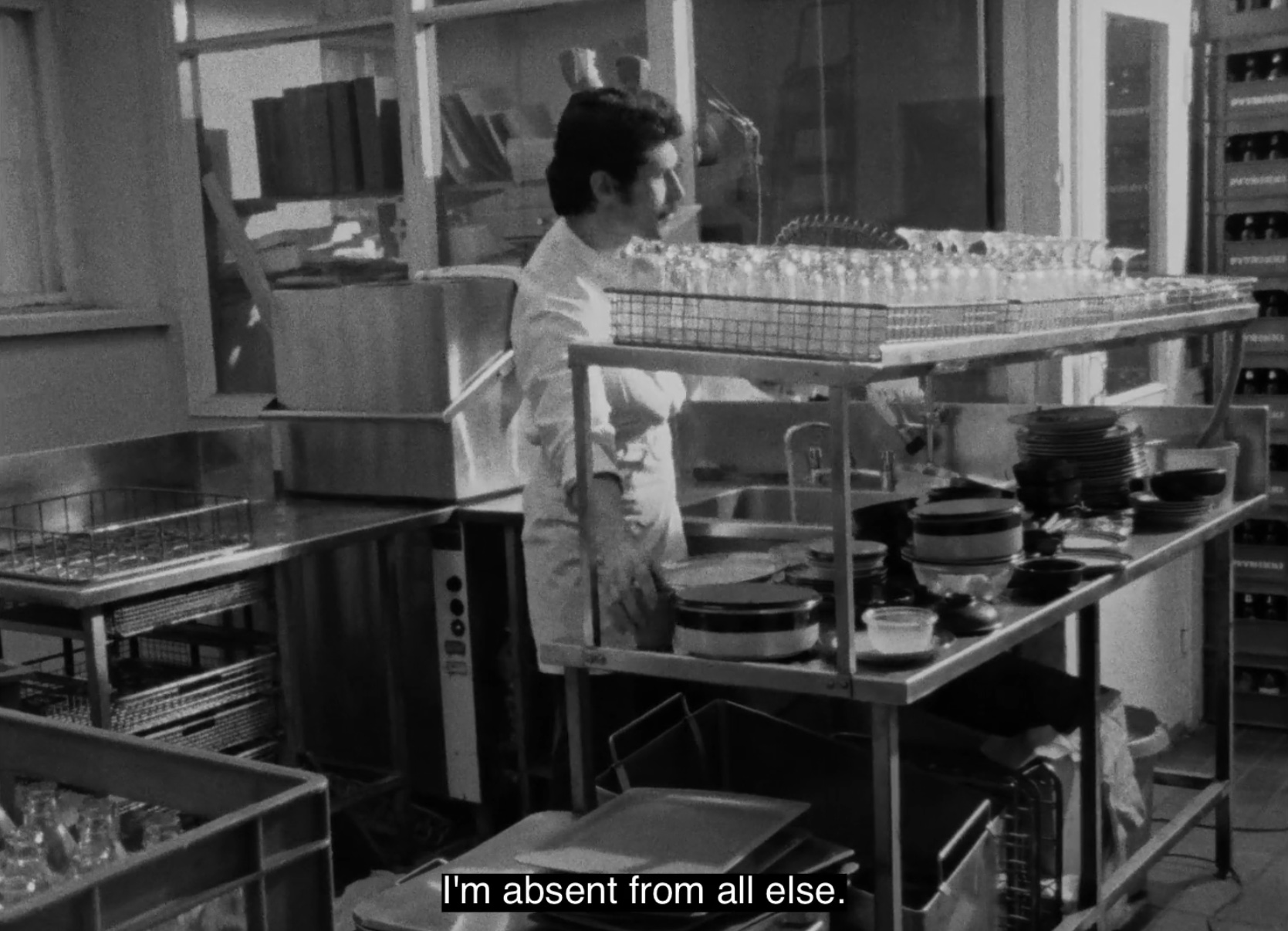
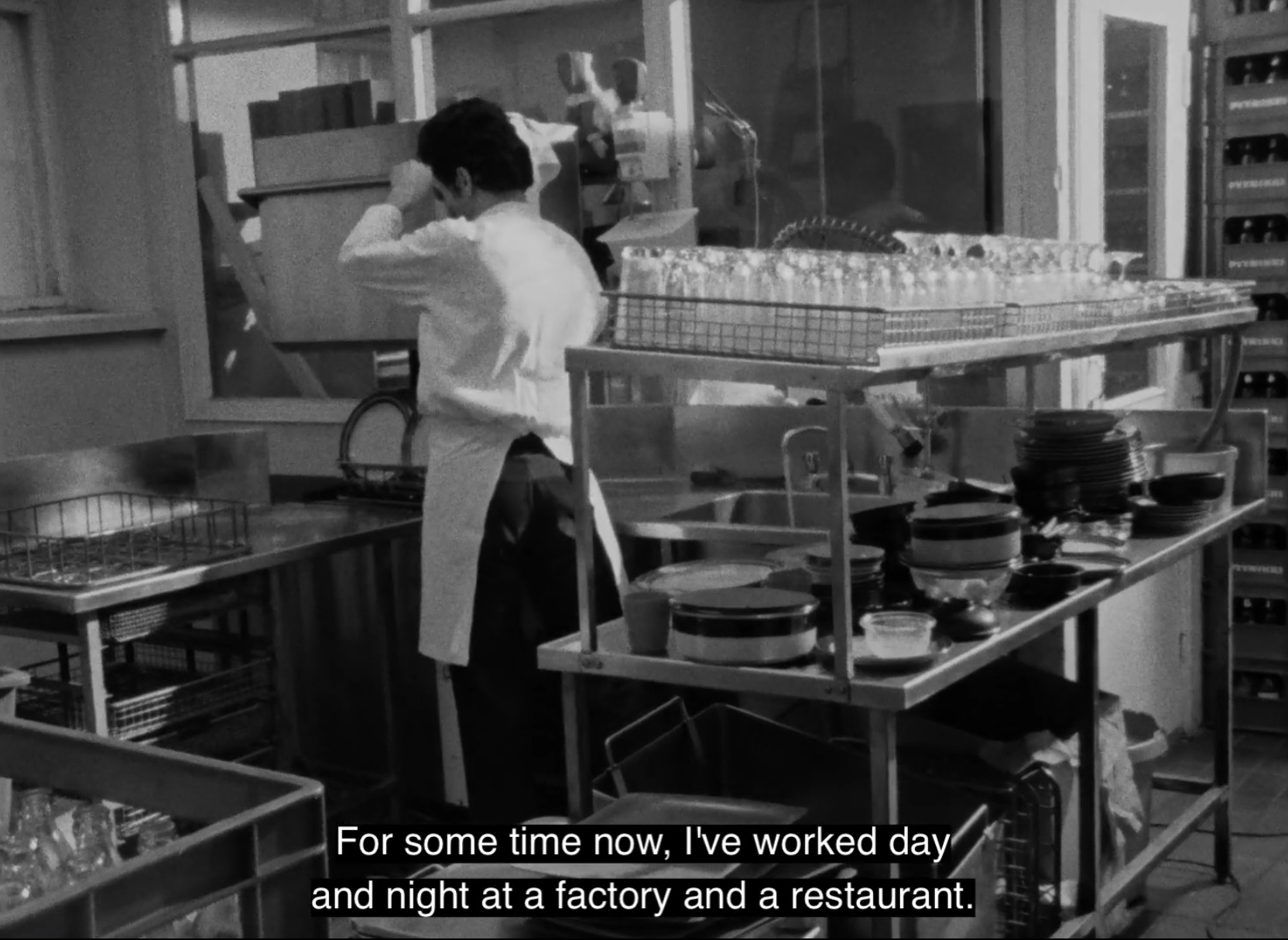
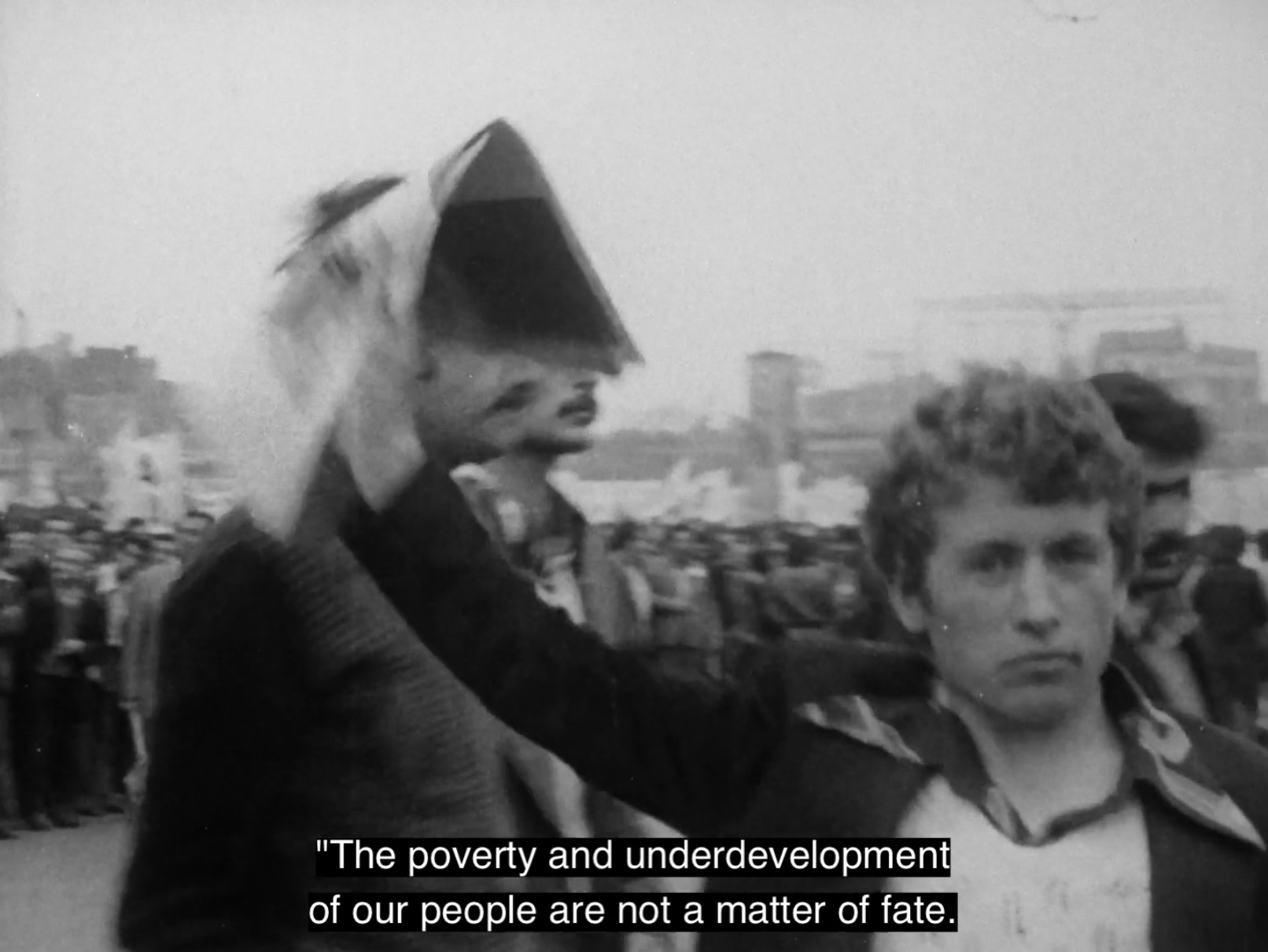
Racialized workers, products of the global division of labor, are only used and reused for their labor. They are otherwise excluded from social participation. When they are no longer required by the economy of the country to which they migrated, they are regarded as disposable. Özmer recognizes this historical and global pattern and can share his vision and understanding with the viewers while poetically experimenting with sound, images and free indirect speech.
All these films take us on journeys from so-called underdeveloped villages of Anatolia to modern, industrial Helsinki, from the peripheries of Mauritania, Senegal and Algeria to the city of Paris, from southern Italy and Greece to Central Europe. They trace the cycle of violence not only where it takes place, but also in the various spatial and temporal dimensions where it is rooted, fed and maintained.
This contribution is published in the framework of the Whole Life Academy.
Connected Material
A conversation on compulsive archiving in relation to a private archive of press photography on Liberia.
Schaber’s contribution revisits her 2004 work culture is our business and considers the complex issues around these three agencies. At stake in these differences are how the image’s story should be told, and how this telling is embedded in the viewing and understanding of history.
This essay explores the plural notion of “ethnofuturisms” by employing a comparative approach. The cultural and political vicissitudes of “futurist” tropes are traced in literary and audiovisual creations that engage with the national, ethnic, and/or racial contexts of the Middle East, African diaspora, East Asia, and former Eastern Bloc.
Epistolary narrative, dialogism, intertextuality, speculative narrative — we imagine this text to be letters between the two of us across different temporalities, making use of a speculative and fragmented narrative in line with the themes we explore in our work: archiving the unarchivable, emotions, memories, and other human conditions within the horizon of extinction.
The legacy of anti-colonial leader and Pan-Africanist revolutionary Amílcar Cabral (1924-1973) still calls for cultural readings, and not strictly political ones. Contemporary art, so-called “artistic research” and critical theory will benefit from a cross-disciplinary approach which puts Cabral as relevant to art or which turns Cabral’s many contributions into tools.
This video interweaves the mobility of defiance against national-colonial borders and the collection of gossips by Southeast Asian migrants in Berlin.
The audio map “biography of kecak” is an attempt to decrease this discrepancy between the singularity of archival knowledge and the multiplicity of individual realiities – using the sonic as its material.
These images were taken in the frame of The Whole Life Academy. Laura Fiorio accompanied the project as a photographer from the beginning in 2019 and developed her own approach of documenting archival sites and methods.
Interrogating the archive of “green” extractivism is not just about uncovering access to knowledge, legal knowledge, for example, that can help expose (ecological and economic) crime and that can thus be a starting point for empowering true alternatives and thus alternative ways of living and organizing economic processes. It is also about creating a resonant space for shared thinking and reflection.
Scanning the Horizon works with and towards the seemingly unattainable, yet powerfully generative utopian demands of queer life set out on the horizon.